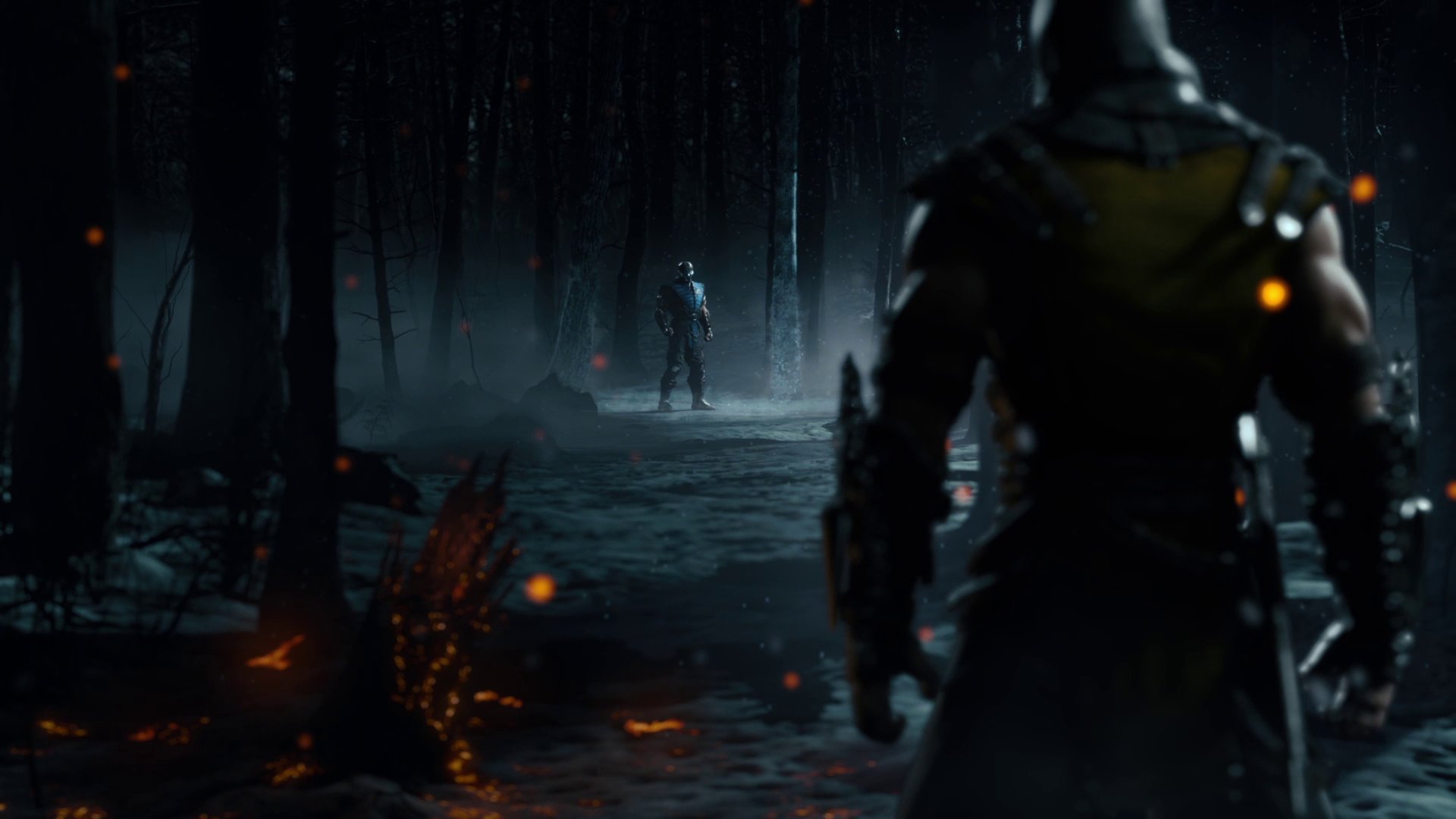Okay, first of all, drop this mentality. You want people to go HARD on you. You want them to RAM your curiosity hole with knowledge.
Step 1:
Fighting games are complex. You have to start all the way in the beginning. And by that I mean, learn fighting game vocabulary. Refer here:
http://en.wiktionary.org/wiki/Appendix:Glossary_of_fighting_games. Understand what normals, specials, strings, etc are.
And also understand how people refer to buttons on a controller.
For example, on the 360,
1 = X
2 = Y
3 = A
4 = B
MB = Meter Burn
Whenever you see something like F1, it just means Forward + 1. Likewise, B1 just means Back + 1.
Step 2:
Once you're comfortable reading that stuff, you can now look up combos and stuff here on TYM. That's the first thing you should do with a character: learn combos. You don't need to execute the highest hitting combo. Just learn a BnB (refer to bread and butter on glossary I linked) that does at least 30%+. Now, there are combos for EVERY given situation, and you need to learn one for all of them. The most prevalent are the following:
Mid-ranged combos - These are the ones you do in the middle of the field when you are given the opportunity (generally, by jumping in with jumping 2). In Injustice, you also want to incorporate interactables into your combos at times.
Advancing move combos - Many characters have long-ranged quick advancing moves that launch for a combo. For example, Superman has F23 and Black Adam has B23. You should learn a combo for these, both mid-ranged and in the corner. These moves are extremely important because of the range they cover, and how defensively they can be used (i.e. for whiff punishing).
Anti air combos - These are combos you execute immediately after hitting an opponent out of an aerial move from the ground. In Injustice, you can really only do this with D2 (uppercut), and it's quite inconsistent.
Air-to-Air combos - These are combos you execute immediately after hitting someone out of the air with your own aerial attack. In Injustice, this is usually jumping 1 or jumping 2. The latter is easier to get a combo off of, but the former is faster. Again, in Injustice, air-to-air combos are very important to do in anticipation (you expect an opponent to jump, so you instantly do a jump 1 in their direction).
Corner combos - As the name implies, these are done in the corner. They are every character's most devastating combos and should always do at least 40%+. In Injustice, you can also end them with a stage transition.
B3 and F3 combos - These are unique to Injustice. In this game, every character has a B3 and F3 move that can be meter burned for armor. The follow up combos should do at least 20%. These moves are generally used to avoid pressure.
Unique combos - Characters may have unique properties they can combo off of. For example, Black Adam has his EX Divekick and Superman has his dive punch.
Okay, so after you learn a combo for all given situations with a character, it is time to apply that knowledge with the AI. Try in Medium until you can pull off the combos with muscle memory alone. Then increase the difficulty to Hard, and if you want, go beyond that.
Step 3:
So now you're comfortable with your character's combos and can go online to pwn noobs, right? WRONG.
Time to educate yourself with the holy grail of knowledge: frame data! Injustice has in-game frame data info for every string and special a character has. It is important to understand the following:
Block Advantage - Your advantage or disadvantage after hitting the opponent with the move while they are blocking. If it's -9, they can punish you with a move that has start-up frames of 1 to 9.
Hit Advantage - Your advantage or disadvantage after hitting the opponent with the move while they are not blocking. If it's 9, that means you can follow it up with a move that has start up frames of 6, for instance. Now you're at a 3 frame gap because 9-6 = 3. This means that your opponent can only interrupt your follow up string with a move that is 3 frames or lower.
This applies to MK9, but can also help with Injustice:
http://testyourmight.com/threads/general-mk9-frame-data-info.15988/
More:
http://thirdpersonblog.wordpress.com/2012/04/18/universal-fighting-game-guide-how-to-read-frame-data/
Step 4:
It is now time to hit the lab with your new found frame data knowledge and be creative. Come up with frame traps, set-ups, gimmicks, and mind tricks using moves that leave you at advantage! Understand why certain strategies CANNOT work in a match (negative advantage!).
The AI can see through set-ups and stuff, so you will need to play a real person to experiment. Also, use the Practice Mode's recording feature to help you.
Step 5:
It is now time to apply your knowledge online! You should be able to body other beginners free now. However, the minute you come across a player with decent fundamentals, you will get bodied. It is now up to you to understand why you are losing, so play the player many times. Understand spacing (controlling the field and space around you to whiff punish and defend adequately), and how to defend against rushdown (<-- refer to frame data knowledge for your opponent's character).
Don't get discouraged if you get destroyed no matter what. Now is time to play people around your skill level, and then better players as you yourself get better. It is also now that you will learn the purpose of F3/B3, clashes, pushblock, etc.
Step 6:
The final step = MUs. Learn them all. Play the best representatives of every character. Once you understand how to defend against every character in the game, and know what to expect, you are good to go.
And that is a step by step, trivialized, training regime of how to get better at a fighting game.





